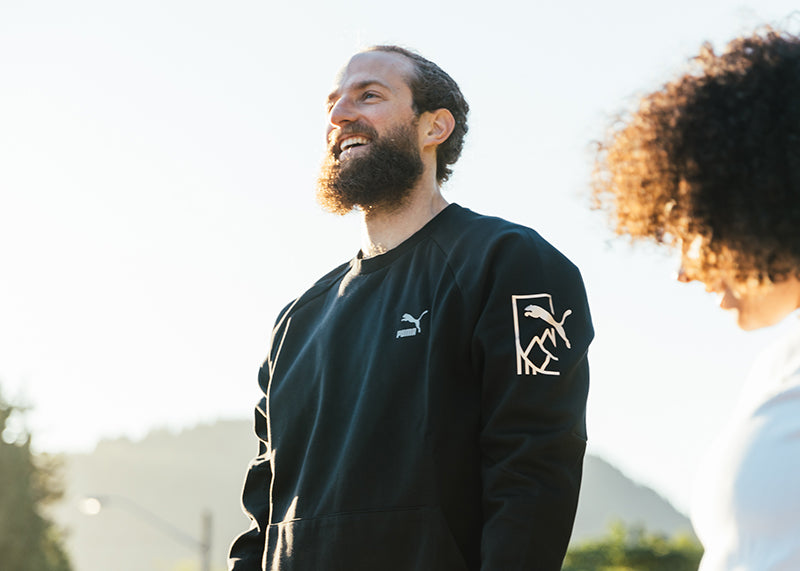
Strength training provides runners with so many benefits. At the core it improves the capacity of our muscles and bones to handle stress. When we strengthen our tissues to handle more stress, we can start to increase our weekly mileage, run faster in our speed work, recover faster or just feel better while running more consistently.
It’s easy to overthink the approach to strength training. There is always the allure of looking for more complicated exercises for improving performance. Yet strength training for running doesn’t need to be complicated. In fact, oftentimes the best training we can do is the simplest. Here are 5 exercises I commonly program to help get you started and keep things simple so you can continue to get stronger and keep running consistently!
1. Split Squat
There are so many reasons I love the split squat. It’s a unilateral exercise that helps us stabilize the hip in all directions, it rotates our pelvis, it trains knee and hip extension, and big toe extension of the back foot... all things we need in running. And you can build some serious strength with the split squat too! There are also endless variations of the split squat to emphasize different outcomes, but today I’ll focus on the standard split squat.
Execution Keys:
- Keep the front shin relatively vertical. At the bottom we want the knees to be at about 90 degree bends
- Flex your glute on the back leg. This will help stabilize the pelvis and give you a bonus stretch in the hip flexor
- Keep the ribs down or “stacked” over the pelvis. A good way to get a feeling for this is to take a breath, fully exhale, then exhale a little further. You’ll feel your core muscles fire up and properly brace the ribs
https://youtu.be/2LsZ-XCTt3Q
2. Kickstand Romanian Deadlift (RDL)
Similar to the split squat, I like the RDL because it has a number of variations that can be used in different contexts. I like the kickstand RDL because it is a single leg exercise, but we don’t sacrifice stability for the weight we can lift. The back leg provides us a balance point so we can focus on the working leg. The RDL is a hinge exercise, which strengthens our glutes, improves our hip extension and takes our pelvis through rotation. This is important for running for two reasons: our glutes help absorb the forces each time we land, and they generate a lot of power through extension!
Execution Keys:
- Start with feet one in front of the other about 1/2 a foot length apart and hip width (find a position that feels stable)
- Keep a slight bend in the front knee
- Drive the hips backwards while keeping weight on the front foot
- Keep the back neutral
An important note about RDLs: It doesn’t matter how far the weight lowers. If we keep good tension on the glutes and hamstrings you will get stronger and the range of motion will improve!
https://youtu.be/-Re-54e_vCM
3. Banded Mountain Climbers
Our core provides the foundation for all of our movement. If our core isn’t moving well, the rest of the body likely won’t function at a high level either. Core is oftentimes thought of as the abdominal muscles, but I like to think of it in broader terms as everything from the hips to shoulders, including the all important rib cage. The banded mountain climber helps with teaching us to get the hips and ribs to work together, all while strengthening the hip flexors.
Execution Keys:
- Protracted shoulders: Round the upper back and create space between the shoulder blades
- Exhale as the knee drives to opposite elbow
https://youtu.be/zEmZlahZl_4
4. Single Arm DB Press
You may be starting to catch on that I’m a fan of rotation. Our bodies are meant to generate rotational forces as well as resist them, and that’s exactly what this exercise taps into. While stabilizing our lower body we generate a rotational force by pressing and then we need to resist the rotational force as the dumbbell pulls the upper body back. All while building some good upper body strength to support good shoulder health.
Execution Keys:
- Support half of your body on the bench
- Keep the ribs down and stacked
- Get a full reach at the top of the press
- Use your core and glutes to control the rotation as the band pulls you back
https://youtu.be/T9RqWCnzZjg
5. Half Kneeling Row
The half kneeling row helps to build our upper mid back, reinforces efficient arm motion for running, emphasizes hip stability and you guessed it, has an element of rotation! Holding the band in the same arm as the forward leg allows us to mimic the running motion, getting an element of specificity. Starting with the back knee on the ground allows us to focus on strengthening the back while driving rotation. As this becomes more familiar you can further challenge yourself by lifting the back knee into an isometric lunge position.
Execution Keys:
- Stacked ribs over the pelvis
- Fire glutes for stability
- Hold band in the same arm as the forward leg
- Rotation: drive the elbow to your back pocket as you rotate
https://youtu.be/9fPBdcYPIyw
If you’re interested to learn more about strength, mobility and strength programming for runners you can connect with me on instagram @impact.running.
Looking forward to seeing you out on the road and trails!